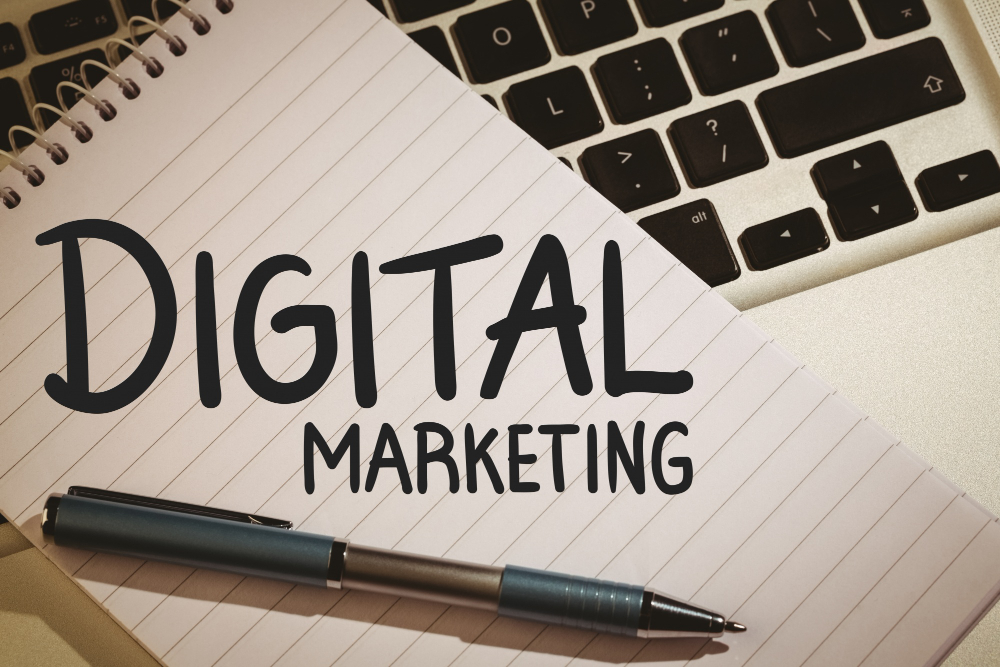
In today’s fast-paced digital age, the landscape of marketing has undergone a significant transformation. With the rise of the internet and advancements in technology, businesses now have unprecedented opportunities to connect with their target audiences on various digital platforms. This shift has given birth to the phenomenon known as digital marketing.
Digital marketing encompasses a broad range of strategies and techniques aimed at promoting products or services through online channels. From search engine optimization (SEO) to social media marketing, email campaigns to pay-per-click advertising, the realm of digital marketing offers endless possibilities for businesses to reach and engage with their customers in a more targeted and cost-effective manner than ever before.
In this comprehensive guide, we will delve into the basics of digital marketing, exploring its fundamental principles, key components, and best practices. Whether you’re a seasoned marketer looking to brush up on your skills or a newcomer eager to learn the ropes, this guide will serve as your roadmap to navigating the exciting world of digital marketing.
Join us as we embark on a journey to unlock the secrets of digital marketing success and empower you to harness the full potential of this dynamic and ever-evolving field.
Definition of Digital Marketing
Digital marketing refers to the strategic use of digital channels and platforms to promote products, services, or brands to target audiences. It encompasses various online marketing tactics and techniques aimed at engaging with potential customers, driving traffic, generating leads, and ultimately, converting prospects into loyal customers. Unlike traditional marketing methods, digital marketing leverages the power of the internet, mobile devices, social media, search engines, email, and other digital mediums to reach consumers in a more personalized and interactive way. The primary goal of digital marketing is to establish a strong online presence, increase brand awareness, and drive measurable results, such as website traffic, leads, sales, and customer loyalty.
Importance of Digital Marketing in Today’s Business Landscape
In the rapidly evolving business landscape of today, digital marketing has emerged as a crucial component for the success and growth of businesses across industries. Here are several reasons why digital marketing holds immense importance:
- Global Reach: Unlike traditional marketing methods limited by geographical boundaries, digital marketing allows businesses to reach a global audience instantaneously. With the internet connecting people worldwide, businesses can expand their reach and target potential customers regardless of location.
- Cost-Effectiveness: Digital marketing offers cost-effective solutions compared to traditional marketing channels such as television or print advertising. Online advertising platforms like Google Ads and social media ads enable businesses to set specific budgets and target audiences precisely, ensuring optimal use of resources and a higher return on investment (ROI).
- Targeted Audience Engagement: Digital marketing enables businesses to segment their target audience based on demographics, interests, behavior, and other factors. This targeted approach allows for personalized communication and tailored marketing messages, increasing engagement and conversion rates.
- Data-Driven Insights: Digital marketing provides businesses with valuable data and insights into consumer behavior, preferences, and trends. Through analytics tools like Google Analytics and social media insights, businesses can track and measure the performance of their marketing campaigns in real time, allowing for informed decision-making and continuous optimization.
- Brand Visibility and Awareness: With the majority of consumers turning to the internet for information and purchases, digital marketing plays a pivotal role in increasing brand visibility and awareness. By implementing SEO strategies, creating engaging content, and maintaining an active presence on social media platforms, businesses can enhance their online visibility and strengthen brand recognition.
- Accessibility and Convenience: Digital marketing offers consumers unprecedented accessibility and convenience, allowing them to research products, compare prices, and make purchases online anytime, anywhere. Businesses that embrace digital marketing can provide seamless online experiences, resulting in improved customer satisfaction and loyalty.
- Adaptability and Flexibility: In the fast-paced digital landscape, trends and consumer preferences can change rapidly. Digital marketing allows businesses to adapt quickly to market changes and adjust their strategies accordingly. Whether it’s launching a new campaign, updating website content, or responding to customer feedback on social media, digital marketing allows for agile and responsive marketing efforts.
Understanding the Fundamentals of Digital Marketing
Digital Marketing Channels
Digital marketing encompasses a diverse array of channels and platforms, each offering unique opportunities for businesses to connect with their target audience and achieve their marketing objectives. Here’s an overview of some of the key channels in digital marketing:
Social Media Marketing
Social media platforms such as Facebook, Instagram, Twitter, LinkedIn, and Pinterest provide businesses with opportunities to engage with their audience, build brand awareness, and drive website traffic.
Strategies for social media marketing include creating compelling content, engaging with followers, running paid advertising campaigns, and leveraging influencer partnerships.
Search Engine Optimization (SEO)
SEO focuses on optimizing a website to improve its visibility and ranking in search engine results pages (SERPs). By optimizing website content, meta tags, and backlinks, businesses can increase organic traffic and attract qualified leads.
Strategies for SEO include keyword research, on-page optimization, technical SEO, and link building.
Pay-Per-Click Advertising (PPC)
PPC advertising allows businesses to display ads on search engines and other digital platforms and pay only when users click on their ads. Platforms such as Google Ads and Bing Ads offer targeting options based on keywords, demographics, and interests.
Strategies for PPC advertising include keyword research, ad copy optimization, bid management, and A/B testing.
Email Marketing
Email marketing involves sending targeted messages to a list of subscribers to promote products, services, or events. Email marketing can help businesses nurture leads, drive sales, and build customer loyalty.
Strategies for email marketing include building an email list, segmenting subscribers, personalizing content, and optimizing email campaigns for mobile devices.
Content Marketing
Content marketing focuses on creating and distributing valuable, relevant content to attract and engage a target audience. Content can take various forms, including blog posts, videos, infographics, eBooks, and podcasts.
Strategies for content marketing include identifying target audience interests and pain points, creating high-quality content, promoting content through various channels, and measuring content performance.
Affiliate Marketing
Affiliate marketing involves partnering with third-party affiliates to promote products or services in exchange for a commission on sales generated through their referral links. Affiliate marketing can help businesses expand their reach and drive sales through trusted influencers and publishers.
Strategies for affiliate marketing include identifying and recruiting affiliates, providing them with promotional materials and tracking links, and monitoring affiliate performance.
Influencer Marketing
Influencer marketing involves partnering with influential individuals or brands to promote products or services to their audience. Influencers can help businesses reach new audiences, build credibility, and drive engagement.
Strategies for influencer marketing include identifying relevant influencers, establishing partnerships, defining campaign goals and objectives, and measuring campaign performance.
Target Audience Identification
Defining Target Audience:
Defining the target audience involves identifying the specific group of people or demographics that a business aims to reach with its marketing efforts. This includes understanding the characteristics, behaviors, and preferences of the ideal customers for the products or services being offered.
Key considerations when defining the target audience include demographics (age, gender, income, education), psychographics (lifestyle, values, attitudes), geographic location, and buying behavior.
Methods for Audience Research:
Audience research involves gathering data and insights to better understand the target audience and inform marketing strategies. Several methods can be used to conduct audience research, including:
- Surveys and Questionnaires: Surveys can be distributed to current customers or target audiences to collect feedback, preferences, and demographic information.
- Interviews and Focus Groups: Conducting interviews or focus group discussions with members of the target audience can provide deeper insights into their needs, motivations, and pain points.
- Data Analysis: Analyzing existing data sources such as website analytics, social media insights, and customer databases can reveal patterns and trends in audience behavior.
- Market Segmentation: Segmenting the target audience into smaller, more specific groups based on shared characteristics or interests allows for more targeted and personalized marketing efforts.
- Competitor Analysis: Studying the target audience of competitors can provide valuable insights into market trends, customer preferences, and areas of opportunity.
- Social Listening: Monitoring conversations and engagement on social media platforms allows businesses to gain real-time insights into audience interests, sentiments, and concerns.
Components of a Successful Digital Marketing Strategy
Website Optimization
Importance of Responsive Design
Responsive design ensures that a website adapts seamlessly to different screen sizes and devices, providing users with a consistent and optimized browsing experience across desktops, laptops, tablets, and smartphones.
With the increasing use of mobile devices for internet browsing, responsive design is essential for attracting and retaining visitors, improving search engine rankings, and reducing bounce rates.
User Experience (UX) Best Practices
User experience encompasses the overall experience that users have when interacting with a website. UX best practices focus on enhancing usability, accessibility, and satisfaction to create a positive and engaging user experience.
Key UX best practices include intuitive navigation, fast loading times, clear and concise content, mobile-friendly design, visually appealing layouts, and seamless functionality.
Content Marketing
Importance of Quality Content
Quality content plays a crucial role in digital marketing by attracting, informing, and engaging target audiences. High-quality content helps build trust and credibility, establishes thought leadership, and drives organic traffic to the website.
By providing valuable and relevant content that addresses the needs and interests of the target audience, businesses can establish themselves as industry experts and create long-lasting relationships with customers.
Types of Content (Blogs, Videos, Infographics, etc.)
Content marketing encompasses various types of content formats, each serving different purposes and appealing to different audience preferences. Common types of content include:
Blogs/articles: Informative and educational articles that provide valuable insights and solutions to audience questions and problems.
Videos: Engaging and visually compelling videos that entertain, educate, or demonstrate products or services.
Infographics: Visual representations of information or data designed to simplify complex concepts and communicate key messages effectively.
eBooks/guides: In-depth and comprehensive resources that offer valuable information and guidance on specific topics or subjects.
3 – Search Engine Optimization (SEO)
Basics of On-Page SEO:
On-page SEO involves optimizing individual web pages to improve their visibility and ranking in search engine results pages (SERPs). Key on-page SEO elements include optimizing title tags, meta descriptions, headings, and image alt texts, as well as optimizing content for relevant keywords and improving page load speed and mobile-friendliness.
Overview of Off-Page SEO Techniques
Off-page SEO focuses on improving a website’s authority, relevance, and reputation through external factors such as backlinks, social signals, and online mentions. Common off-page SEO techniques include link building, social media engagement, influencer outreach, and online reputation management.
Social Media Marketing
Overview of Popular Social Media Platforms
Social media platforms such as Facebook, Instagram, Twitter, LinkedIn, and Pinterest offer unique opportunities for businesses to connect with their target audience, build brand awareness, and drive engagement.
Each social media platform has its features, demographics, and best practices, and businesses should carefully select and tailor their social media presence to align with their marketing objectives and target audience preferences.
Strategies for Effective Social Media Campaigns
Effective social media campaigns leverage a combination of content, targeting, and engagement strategies to achieve specific marketing goals. Strategies may include creating compelling content, utilizing paid advertising options, engaging with followers through comments and messages, running contests and promotions, and monitoring and analyzing performance metrics to optimize campaign effectiveness.
5 – Email Marketing
Building an Email List
Building an email list is essential for email marketing success, as it provides businesses with a direct channel to communicate with and nurture leads and customers. Strategies for building an email list include offering valuable incentives such as discounts or free resources, creating opt-in forms on the website, promoting sign-ups through social media and other channels, and ensuring compliance with email marketing regulations and best practices.
Crafting Engaging Email Campaigns
Engaging email campaigns are characterized by relevant, personalized content that resonates with recipients and prompts action. Strategies for crafting engaging email campaigns include segmenting email lists based on demographics, interests, or behaviors, personalizing email content and subject lines, using eye-catching visuals and compelling calls-to-action (CTAs), optimizing emails for mobile devices, and testing and iterating on email campaigns to improve performance over time.
Measuring and Analyzing Digital Marketing Performance
Introduction to Key Performance Indicators (KPIs):
Definition and Importance of KPIs
Key Performance Indicators (KPIs) are measurable metrics that help businesses track and evaluate the success of their digital marketing efforts. KPIs provide valuable insights into the performance of marketing campaigns, allowing businesses to gauge progress towards specific goals and objectives.
The importance of KPIs lies in their ability to quantify performance, identify areas for improvement, and make data-driven decisions to optimize marketing strategies for better results. By defining and monitoring relevant KPIs, businesses can measure ROI, assess campaign effectiveness, and allocate resources more effectively.
Tools for Tracking and Analyzing Data
Overview of Analytics Tools (Google Analytics, Social Media Insights, etc.)
Analytics tools play a crucial role in tracking and analyzing data related to digital marketing performance. Google Analytics is a powerful tool for monitoring website traffic, user behavior, and conversion metrics. It provides insights into key metrics such as traffic sources, bounce rates, page views, and goal completions.
Social media platforms also offer built-in analytics tools, such as Facebook Insights, Twitter Analytics, and LinkedIn Analytics, which allow businesses to track engagement, reach, and audience demographics on their social media channels.
Interpreting Data to Improve Campaign Performance
Analyzing Performance Metrics
Interpreting data involves analyzing performance metrics to gain insights into the effectiveness of digital marketing campaigns. Businesses should track and evaluate relevant KPIs to assess campaign performance against predetermined goals and benchmarks.
Common performance metrics include conversion rates, click-through rates (CTR), engagement metrics (likes, shares, comments), bounce rates, return on investment (ROI), and customer acquisition cost (CAC).
Making Data-Driven Decisions
Data interpretation enables businesses to make informed decisions to optimize campaign performance and drive better results. By identifying trends, patterns, and areas for improvement in the data, businesses can adjust their strategies, allocate resources more effectively, and prioritize initiatives that deliver the highest ROI.
A/B testing and experimentation can help businesses test different variables and approaches to determine which tactics are most effective in achieving desired outcomes.
Continuous Optimization and Iteration
Continuous optimization is essential for improving campaign performance over time. By regularly monitoring and analyzing data, businesses can identify opportunities for optimization, refine their strategies, and iterate on successful tactics to maximize results.
Data interpretation should be an ongoing process, with businesses continuously learning from data insights and adapting their strategies to changes in the market landscape, consumer behavior, and industry trends.
Implementing Digital Marketing Strategies
Developing a Digital Marketing Plan
Assessing Current Situation
Before developing a digital marketing plan, businesses should assess their current situation by conducting a SWOT analysis (Strengths, Weaknesses, Opportunities, Threats). This involves evaluating internal strengths and weaknesses as well as external opportunities and threats in the market landscape.
Defining Target Audience and Goals
Businesses should clearly define their target audience and marketing goals and objectives. This includes identifying specific demographics, interests, and behaviors of the target audience, as well as setting measurable and achievable goals such as increasing website traffic, generating leads, or improving conversion rates.
Selecting Digital Marketing Channels
Based on the target audience and marketing goals, businesses should select the most appropriate digital marketing channels and strategies to reach and engage with their audience effectively. This may include channels such as social media, SEO, PPC, email marketing, content marketing, and more.
Creating an Action Plan and Timeline
Developing a detailed action plan and timeline is essential for implementing digital marketing strategies effectively. Businesses should outline specific tasks, responsibilities, and deadlines for each stage of the plan, ensuring clear direction and accountability.
Budgeting and Allocating Resources
Setting Digital Marketing Budget
Businesses should determine their digital marketing budget based on factors such as overall marketing objectives, available resources, and expected ROI. The budget should be allocated across various digital marketing channels and activities based on their potential impact and effectiveness.
Allocating Resources
Allocating resources involves assigning human, financial, and technological resources to execute digital marketing strategies effectively. This may include hiring skilled professionals, investing in marketing tools and software, and allocating funds for advertising and promotional activities.
Setting Realistic Goals and Objectives
SMART Goal Setting
Goals and objectives should be Specific, Measurable, Achievable, Relevant, and Time-bound (SMART). This ensures that goals are clearly defined, quantifiable, realistic, and aligned with overall business objectives.
Aligning Goals with KPIs
Goals and objectives should be aligned with relevant Key Performance Indicators (KPIs) to track progress and measure success. Businesses should identify specific KPIs related to each goal, such as website traffic, conversion rates, or social media engagement metrics.
Execution and Monitoring of Campaigns
Implementing Digital Marketing Strategies
Execution involves implementing digital marketing strategies according to the digital marketing plan and timeline. This may include creating and publishing content, launching advertising campaigns, optimizing website performance, and engaging with audiences on social media platforms.
Monitoring and Measuring Performance
Businesses should continuously monitor and measure the performance of digital marketing campaigns using relevant KPIs and analytics tools. This allows for real-time tracking of results, identification of areas for improvement, and optimization of campaign strategies to maximize ROI.
By following these steps, businesses can effectively implement digital marketing strategies, allocate resources efficiently, set realistic goals, and monitor campaign performance to achieve success in the digital landscape.
Staying Updated with Digital Marketing Trends
Overview of Current Digital Marketing Trends
Emerging Technologies
Digital marketing is constantly evolving with the emergence of new technologies such as artificial intelligence (AI), machine learning, augmented reality (AR), and voice search. These technologies are reshaping the way businesses engage with their audience and deliver personalized experiences.
Video Marketing
Video continues to dominate as a popular and effective digital marketing trend. Platforms like YouTube, TikTok, and Instagram are witnessing a surge in video consumption, making video marketing an essential strategy for businesses to capture audience attention and drive engagement.
Interactive-Content
Interactive content such as quizzes, polls, surveys, and interactive infographics, is gaining traction as a way to engage audiences and provide personalized experiences. Interactive content encourages active participation from users, resulting in higher engagement and sharing.
Personalization
Personalization is becoming increasingly important in digital marketing as consumers expect more relevant and personalized experiences. Businesses are leveraging data-driven insights to deliver personalized content, product recommendations, and offers tailored to individual preferences and behaviors.
Voice Search Optimization
With the rise of voice-activated devices and virtual assistants like Amazon Alexa, Google Assistant, and Siri, voice search optimization is becoming crucial for businesses to ensure their content is discoverable through voice search queries.
Social Commerce
Social commerce is on the rise, with social media platforms increasingly integrating e-commerce features such as shoppable posts, in-app checkout, and live shopping experiences. Businesses are leveraging social commerce to drive sales directly from social media platforms.
Importance of Continuous Learning and Adaptation
Dynamic Nature of Digital Marketing
Digital marketing is a fast-paced and constantly evolving field, with new trends, technologies, and consumer behaviors emerging regularly. Continuous learning and adaptation are essential for staying ahead of the curve and remaining competitive in the digital landscape.
Keeping Up with Industry Changes
By staying updated with digital marketing trends and industry changes, businesses can adapt their strategies and tactics to capitalize on new opportunities and address evolving consumer needs and preferences.
Improving Performance and ROI
Continuous learning allows businesses to refine their digital marketing strategies, optimize campaigns, and improve performance and ROI. By testing new approaches, analyzing results, and iterating on successful tactics, businesses can drive better results and achieve their marketing objectives.
Remaining Relevant and Engaging
In a crowded digital marketplace, staying relevant and engaging is essential for capturing audience attention and maintaining brand relevance. By embracing new trends and innovations, businesses can keep their marketing efforts fresh, exciting, and impactful.
Enhancing Customer Experience
Continuous learning enables businesses to better understand their audience and deliver more personalized and engaging experiences. By adapting to changing consumer preferences and behaviors, businesses can enhance customer satisfaction and loyalty.
Conclusion
Digital marketing is a dynamic and ever-evolving field, with new technologies, trends, and consumer behaviors constantly reshaping the landscape. As such, businesses need to embrace continuous learning, experimentation, and adaptation to stay ahead of the curve and remain relevant in the digital age. By staying informed about emerging trends, monitoring industry changes, and being proactive in adjusting strategies and tactics accordingly, businesses can navigate the complexities of digital marketing and capitalize on new opportunities for growth and success.
Ultimately, digital marketing offers endless possibilities for businesses to connect with their audience, drive engagement, and achieve their marketing objectives. By embracing the ever-evolving nature of digital marketing and maintaining a mindset of innovation and agility, businesses can thrive in an increasingly digital world.






